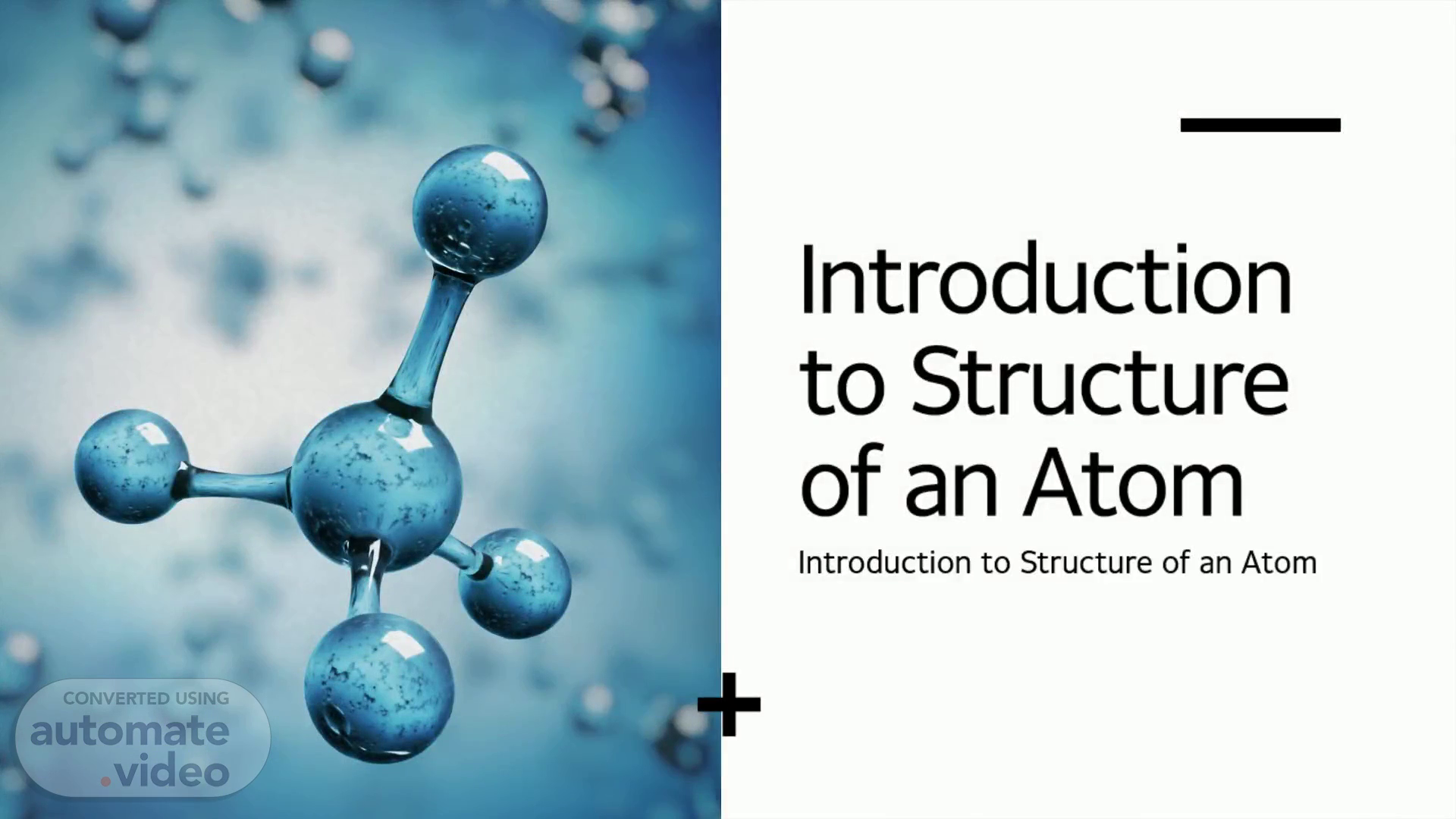
Page 1 (0s)
Introduction to Structure of an Atom. Introduction to Structure of an Atom.
Page 2 (9s)
Atom. Atoms Atoms are the building blocks of matter. It is the smallest unit of matter that is composed of three sub-atomic particles: the proton, the neutron and the electron..
Page 3 (21s)
Cathode ray experiment. J. J. Thomson discovered the existence of electrons. He did this using a cathode ray tube, which is a vacuum-sealed tube with a cathode and anode on one end that created a beam of electrons travelling towards the other end of the tube. The air inside the chamber is subjected to high voltage and electricity flows through the air from the negative electrode to the positive electrode. The characteristics of cathode rays (electrons) do not depend upon the material of electrodes and the nature of the gas present in the cathode ray tube. The experiment showed that the atom was not a simple, indivisible particle and contained at least one subatomic particle – the electron..
Page 4 (52s)
Electrons. Electrons are the negatively charged sub-atomic particles of an atom. The mass of an electron is considered to be negligible, and its charge is -1. The symbol for an electron is e– Electrons are extremely small. They are found outside the nucleus..
Page 5 (1m 7s)
Thomson’s model of an atom. Thomson’s model of an atom According to Thomson,(i) An atom consists of a positively charged sphere and the electrons are embedded in it. (ii) The negative and positive charges are equal in magnitude. So, the atom as a whole is electrically neutral The first model of an atom to be put forward and taken into consideration. He proposed a model of the atom be similar to that of a Christmas pudding/watermelon. The red edible part of the watermelon is compared with the positive charge in the atom. The black seeds in the watermelon are compared with the electrons which are embedded on it..
Page 6 (1m 35s)
Radioactivity. Radioactivity Radioactivity is the term for the process by which an unstable nucleus of an atom loses energy by giving out particles. It does so by giving out particles such as alpha and beta particles. This process is spontaneous. An atom is unstable if the nucleus has an imbalance, meaning a difference in the protons and neutrons..
Page 8 (1m 58s)
Rutherford Model Rutherford’s experiment and observations In this experiment, fast-moving alpha (α)-particles were made to fall on a thin gold foil. His observations were: A major fraction of the α-particles bombarded towards the gold sheet passed through it without any deflection, and hence most of the space in an atom is empty. Some of the α-particles were deflected by the gold sheet by very small angles, and hence the positive charge in an atom is not uniformly distributed. The positive charge in an atom is concentrated in a very small volume. Very few of the α-particles were deflected back, that is only a few α-particles had nearly 180o angle of deflection. So the volume occupied by the positively charged particles in an atom is very small as compared to the total volume of an atom..
Page 9 (2m 33s)
Rutherford’s model of an atom Rutherford concluded the model of the atom from the α-particle scattering experiment as: (i) There is a positively charged centre in an atom called the nucleus. Nearly all the mass of an atom resides in the nucleus. (ii) The electrons revolve around the nucleus in well-defined orbits. (iii) The size of the nucleus is very small as compared to the size of the atom..
Page 10 (2m 53s)
Neil Bohr Model Properties of electrons, protons and neutrons.
Page 11 (3m 1s)
Bohr’s Model of an atom Bohr came up with these postulates to overcome the objections raised against Rutherford’s model: Electrons revolve around the nucleus in stable orbits without emission of radiant energy. Each orbit has a definite energy and is called an energy shell or energy level. An orbit or energy level is designated as K, L, M, N shells. When the electron is in the lowest energy level, it is said to be in the ground state. An electron emits or absorbs energy when it jumps from one orbit or energy level to another. When it jumps from a higher energy level to lower energy level, it emits energy while it absorbs energy when it jumps from lower energy level to higher energy level..
Page 12 (3m 34s)
Orbits Orbits are energy shells surrounding the nucleus in which electrons revolve. Electron distribution in different orbits The distribution was suggested by Bohr and Bury;.
Page 13 (4m 0s)
Isotopes and Isobars Isotopes are defined as the atoms of the same element, having the same atomic number ( number of protons ) but different mass numbers ( number of protons+neutrons )..
Page 14 (4m 11s)
Gravity. What is Gravity Every object that has mass exerts a gravitational pull or force on every other mass. The strength of this pull depends on the masses of objects at play. Gravity is what keeps the planets in orbit around the sun and the moon around the Earth. Hence, we define gravity as:.